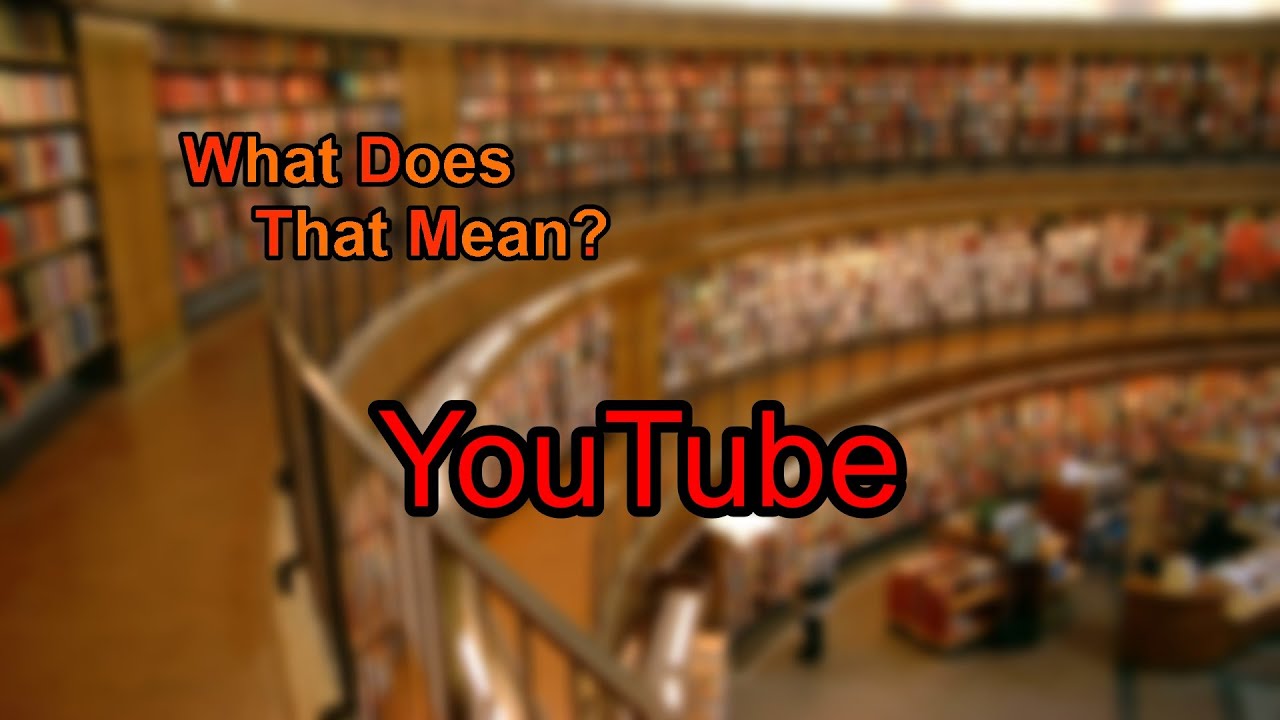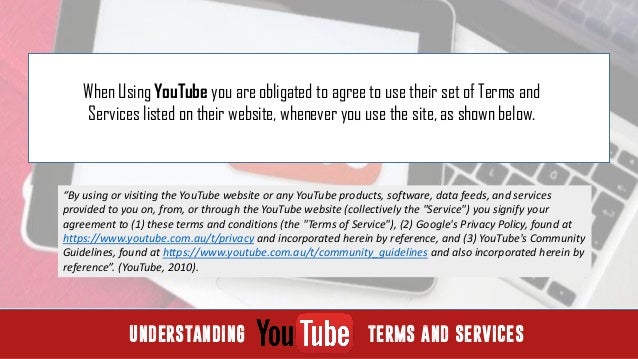YouTube has become a cornerstone of digital communication and entertainment, hosting over two billion users worldwide. With such a vast ecosystem, it’s no surprise that there is a unique set of terminologies that can be quite baffling for newcomers. Whether you are a casual viewer or an aspiring content creator, understanding the lingo used on the platform is essential for navigating its features and engaging with the community. This includes terms that are not only technical but also contextual, enhancing your YouTube experience in ways you might not expect. Let’s dive into the essential vocabulary!
What Does "Mean" Refer to on YouTube?

When we talk about "mean" in the context of YouTube, it can take on multiple interpretations that relate to content, comments, or even the platform's analytics. Here’s what you need to know:
1. Mean Comments:
One of the most common usages of "mean" on YouTube refers to the negative or derogatory comments that people often leave on videos. These comments can cover anything from personal attacks on the creator to insulting remarks about the content itself.
2. Mean Statistics:
In a more analytical sense, "mean" can refer to average statistics regarding a video’s performance. This includes metrics like:
- Mean Watch Time: The average duration viewers spend watching a video.
- Mean Engagement Rate: An average of likes, shares, or comments per video.
- Mean Views: The average number of views a video accumulates over a set period.
3. Mean as a Descriptor:
Lastly, "mean" can serve as an adjective to describe specific content, such as a "mean prank," which implies a negative or harmful connotation associated with the content being presented. Understanding these nuances is key to grasping the tone and the community vibe of various channels.
In summary, "mean" can reference both negative comments and statistical measures on YouTube, reflecting the community's dynamic and the varied interpretations of content. Knowing these meanings will help you communicate effectively and navigate YouTube with greater confidence!
Common YouTube Terms and Their Significance

Whether you're a seasoned YouTube explorer or a fresh face just diving into the platform, you'll quickly encounter a world of unique terminology. Understanding these common terms is essential for navigating the site effectively and enhancing your overall experience. Here are some of the most vital terms to get familiar with:
- Subscriber: This refers to users who have opted to follow a channel. Each subscriber receives updates about new content, helping creators build a loyal audience.
- Monetization: This term describes the process where creators earn money from their videos, typically through ads, sponsorships, and merchandise. It's a significant milestone for many creators.
- Engagement: Engagement measures how viewers interact with content through likes, comments, shares, and subscriptions. Higher engagement usually indicates that content resonates well with viewers.
- Algorithm: YouTube’s algorithm determines which videos appear in users’ feeds. It takes into account factors like watch time, user engagement, and video relevance to suggest content.
- Watch Time: This term refers to the total amount of time viewers spend watching a video. It’s a critical metric for creators, as higher watch time can lead to better visibility on the platform.
- Thumbnail: This is the small image that represents a video. A captivating thumbnail can attract more clicks, making it an important tool for creators.
Understanding these terms not only makes your navigation smoother but also gives you insights into how creators operate and succeed on the platform.
The Impact of Terminology on Viewers and Creators
The language surrounding YouTube isn't just jargon—it's a reflection of the community culture and the dynamics between creators and viewers. From the outside, this terminology may seem trivial, but it carries significant weight in how content is consumed and created.
When it comes to creators, using these terms can help them better connect with their audience. Familiarity with YouTube’s language allows them to craft content that resonates and engages. For instance, knowing the importance of engagement can inspire them to create videos that encourage more interaction, whether through comments or shares.
| Term | Impact on Creators | Impact on Viewers |
|---|---|---|
| Subscriber | Increases creator credibility. | Signifies trust in the creator. |
| Engagement | Encourages lively content creation. | Enhances community interaction. |
| Monetization | Enables financial support for creators. | Signifies quality-control through ads. |
For viewers, understanding these terms enriches their viewing experience. When a viewer knows what monetization entails, for example, they may feel more supportive of creators and their work. Furthermore, being familiar with watch time can lead to a deeper appreciation for the content creation process, fostering a stronger viewer-creator relationship.
In essence, the terminology used on YouTube plays a pivotal role in shaping both the creator landscape and the viewer experience. By embracing this language, both parties can contribute to a more engaged and informed community.
Understanding YouTube's Terminology and What "Mean" Means
YouTube has grown into a complex ecosystem of content, culture, and community, with its own unique vocabulary. Understanding this terminology is essential for both creators and viewers to navigate the platform effectively. Below are some key terms commonly associated with YouTube:
- Content Creator: An individual or group who produces videos for distribution on YouTube.
- Channel: A personalized page on YouTube that hosts a content creator's videos.
- Subscribers: Users who have chosen to follow a channel, receiving notifications when new content is posted.
- Views: The number of times a video has been watched, reflecting its popularity.
- Monetization: The process of earning revenue from videos, typically through ads or sponsorships.
- Algorithm: A complex system used by YouTube to determine which videos are recommended to viewers based on their previous activity.
One term that often causes confusion is "mean." In the context of YouTube, "mean" can refer to:
- Being unkind or hurtful in comments or video content.
- A statistical measurement representing the average of views, likes, or other engagement metrics.
| Term | Definition |
|---|---|
| CPM | Cost Per Mille; revenue earned for every 1,000 ad views. |
| Engagement Rate | A metric indicating audience interaction through likes, shares, and comments. |
Grasping these terms not only enhances your YouTube experience but also empowers you to create content that resonates with your audience.
Conclusion: Navigating YouTube's language is crucial for effectively engaging with the platform's diverse community, whether you're a viewer or a content creator looking to connect meaningfully with your audience.










